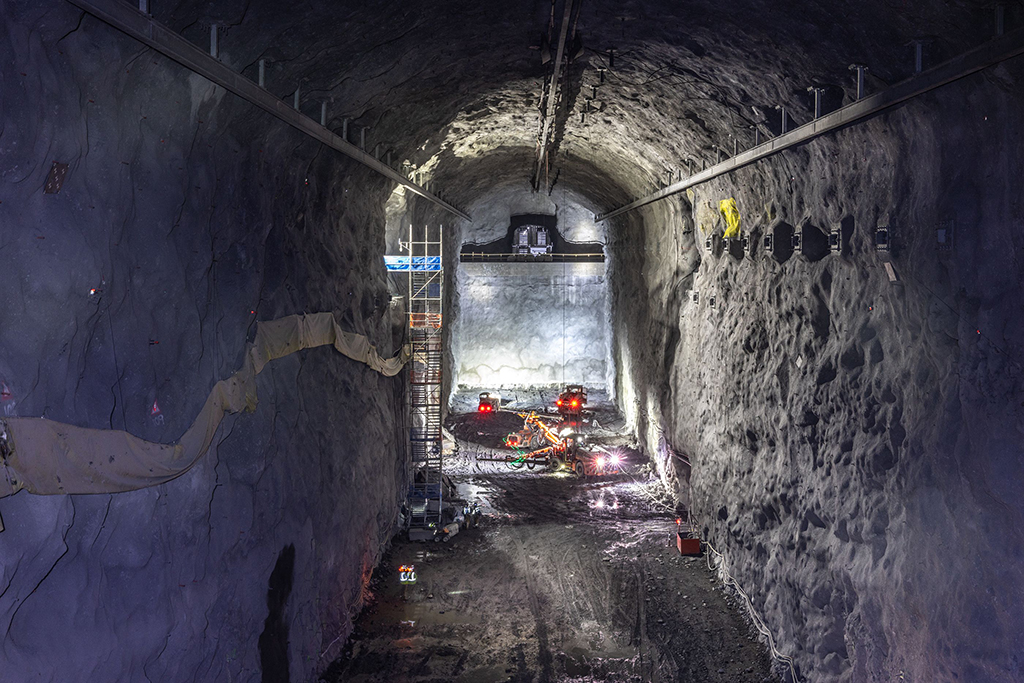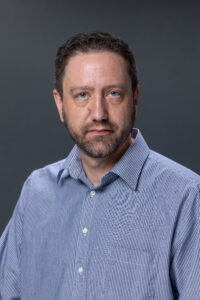Not Hollywood but reality, and with neutrinos
Three UND professors to take part in DUNE research; excavation of gigantic caverns in South Dakota is now complete

Editor’s note: The press release below was issued by the U.S. Department of Energy Office of Science and Fermilab, a DOE Office of Science laboratory. It was issued on Feb. 1 regarding excavation completion in Fermilab’s Deep Underground Neutrino Experiment (DUNE) program, located in gigantic caverns in South Dakota. One Valley City State University professor (who is also a UND adjunct professor) and two UND professors are involved in the DUNE program.
According to the DOE, neutrinos are the most abundant particle in the universe to have mass, yet they are so tiny and weigh so little that their mass has not been weighed. Three different types of neutrinos have been identified. One mission of the DUNE project is to search for a phenomenon called “neutrino oscillation,” whereby neutrinos change from one type to another as they travel.
David DeMuth, a physicist at Valley City State University and an adjunct professor at UND, is a long-collaborating member of DUNE. He is involved in the computational and educational aspects of the program, and he invited UND Professors of Physics and Astrophysics Tim Young and Wayne Barkhouse to participate. They will assist in computational research by using UND’s and VCSU’s computers for data analysis.
According to Young, a portion of the DUNE research will be directed at detecting neutrinos produced following a supernova. Young is working on the statistics of stellar distributions around the sun that could produce one of these explosions. As to the phenomenon of neutrino oscillation, Young told UND Today:
“This is like having a chocolate ice cream cone and walking down the street, it changes to vanilla. Very bizarre particles!”
Barkhouse’s research is focused on galaxy clusters, systems that contain thousands of galaxies that are gravitationally bound together into huge structures. He told UND Today that he is examining the different lines of evidence that support the existence of dark matter – matter that is not made up of ordinary matter like protons, neutrons and electrons, and that doesn’t emit or reflect light, but interacts gravitationally with the universe.
Said Barkhouse: “The exact nature of dark matter is a mystery, maybe some form of subatomic particle that is yet to be discovered. DUNE may provide the answer!”
DeMuth, Young and Barkhouse are the only three physicists in North Dakota working on the DUNE project.
****

Excavation of colossal caverns for Fermilab’s DUNE experiment completed
The excavation of the caverns that will house the gigantic particle detectors of the Deep Underground Neutrino Experiment in Lead, South Dakota is complete. Final outfitting of the colossal caverns will begin soon and make way for the start of the installation of the DUNE detectors later this year.
Lead, SD – Excavation workers have finished carving out the future home of the gigantic particle detectors for the international Deep Underground Neutrino Experiment. Located a mile below the surface, the three colossal caverns are at the core of a new research facility that spans an underground area about the size of eight soccer fields.
Hosted by the U.S. Department of Energy’s Fermi National Accelerator Laboratory, DUNE scientists will study the behavior of mysterious particles known as neutrinos to solve some of the biggest questions about our universe. Why is our universe composed of matter? How does an exploding star create a black hole? Are neutrinos connected to dark matter or other undiscovered particles?
The caverns provide space for four large neutrino detectors—each one about the size of a seven-story building (see 2-minute animation). The detectors will be filled with liquid argon and record the rare interaction of neutrinos with the transparent liquid.
Trillions of neutrinos travel through our bodies each second without us even knowing it. With DUNE, scientists will look for neutrinos from exploding stars and examine the behavior of a beam of neutrinos produced at Fermilab, located near Chicago, about 800 miles east of the underground caverns. The beam, produced by the world’s most intense neutrino source, will travel straight through earth and rock from Fermilab to the DUNE detectors in South Dakota. No tunnel is necessary for the neutrinos’ path.
“The completion of the excavation of these enormous caverns is a significant achievement for this project,” said U.S. Project Director Chris Mossey. “Completing this step prepares the project for installation of the detectors starting later this year and brings us a step closer towards fulfilling the vision of making this world-class underground facility a reality.”
Engineering, construction and excavation teams have been working 4,850 feet below the surface since 2021 at the Sanford Underground Research Facility, home of the South Dakota portion of DUNE. Construction crews dismantled heavy mining equipment and, piece by piece, transported it underground using an existing shaft. Underground, workers reassembled the equipment, and workers spent about two years blasting and removing rock. Close to 800,000 tons of rock were excavated and transported from underground into an expansive former mining area above ground known as the Open Cut.
Workers will soon begin to outfit the caverns with the systems needed for the installation of the DUNE detectors and the daily operations of the research facility. Later this year, the project team plans to begin the installation of the insulated steel structure that will hold the first neutrino detector. The goal is to have the first detector operational before the end of 2028.
“The completion of the three large caverns and all of the interconnecting drifts marks the end of a really big dig. The excavation contractor maintained an exemplary safety record working over a million hours without a lost-time accident. That’s a major achievement in this heavy construction industry,” said Fermilab’s Michael Gemelli, who managed the excavation of the caverns by Thyssen Mining. “The success of this phase of the project can be attributed to the safe, dedicated work of the excavation workers, the multi-disciplined backgrounds of the project engineers and support personnel. What a remarkable achievement and milestone for this international project.”
DUNE scientists are eager to start the installation of the particle detectors. The DUNE collaboration, which includes more than 1,400 scientists and engineers from over 200 institutions in 36 countries, has successfully tested the technology and assembly process for the first detector. Mass production of its components has begun. Testing of the technologies underlying both detectors is underway using particle beams at the European laboratory CERN.
Fermilab is America’s premier national laboratory for particle physics and accelerator research. A U.S. Department of Energy Office of Science laboratory, Fermilab is located near Chicago, Illinois, and operated under contract by the Fermi Research Alliance LLC. Visit Fermilab’s website at www.fnal.gov and follow us on Twitter at @Fermilab.
The DOE Office of Science is the single largest supporter of basic research in the physical sciences in the United States and is working to address some of the most pressing challenges of our time. For more information, please visit science.energy.gov.




